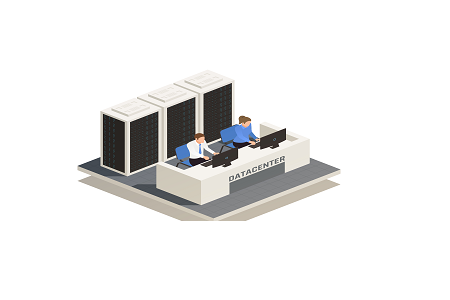Salient IT Services › Data backup solutions West Sacramento
What you need to know about data backup solutions in West Sacramento
Getting back to work after a disruption (of any sort) generally depends on getting IT systems back online and populating them with the necessary data. With that in mind, here is a quick guide to what you need to know about data backup solutions in West Sacramento.
These days, cloud data backup is almost always the only sensible way to go
If you’re running a data center, then there may be a case for using physical storage for your local data backup. Even in a data center, however, you generally want to use the cloud for your off-site data backup. This not only saves you the hassle and cost of transporting physical media to an off-site storage facility but also, and probably much more importantly, speeds up your recovery time by eliminating the need to bring them back again.
If you’re already in the cloud, public or private, then really cloud data backups are the only sensible option.
If you’re in the public cloud
If you’re in the public cloud, then it’s still worth making the effort to organize data backups to a second private cloud. Remember the adage that you need three copies of your data (including your production copy) over two media, with one copy being kept off-site. Relying on the automated backups offered by many public-cloud vendors only gives you two copies of your data and they’re both, effectively, on-site.
This leaves you exposed not only in the event of anything happening to your main cloud platform (however unlikely that may seem) but also in the event of your user accesses being misused (accidentally or deliberately) or compromised, resulting in your data being corrupted or deleted.
As a bonus, backing up your data to a second public cloud can form the basis of a cost-effective disaster-recovery solution. Just add the tools you need to use the data (such as an operating system and applications) and you’ll know you can easily transition from one cloud to the other if the need arises.
If you’re in the private cloud
If you’re in the private cloud, then you can use the public cloud for storage (provide that you encrypt the data on your own servers first) but you cannot decrypt and work with your data in the public cloud, so you cannot use it as a full disaster-recovery solution. This means that you have to choose between using the public cloud as a bridge between your main private cloud and the private cloud you use for disaster recovery, or just backing up your data to your private cloud.

As a rule of thumb, if your priority is to keep costs as low as possible, then using the public cloud is the better option and for the most part, it’s going to have minimal to no impact on your recovery time. The reason for this is that most of the time, you’re going to be restoring to your main system (and most of that time, you’re going to be restoring from your local backup).
The only time the difference will come into play is when you need to restore to your disaster-recovery cloud. At that point, you will need to transmit the data from the public cloud to your disaster-recovery cloud and decrypt it in the safe environment. This will push back your recovery time, hence if being able to recover quickly after a disaster is your top priority, then you usually want to store your data backups in your private cloud.
You should only back up the data you actively need for production
The whole point of a data backup is to get you back up and running after a disruptive event. This means that you only need to backup any data you use for everyday work. All other data should be put into a data archive if it is kept at all. It is important to get this right whatever data backup solution you use, but it is particularly relevant if you’re working in the cloud as the link between consumption and costs is much more direct.
The better you know your data, the better you can manage your costs
Again, in principle, this applies in all environments but in practice, it has particular relevance to the cloud. In the real world, using different kinds of storage for different kinds of data is often just more hassle than it’s worth. In the cloud, however, it’s usually fairly easy to put your most critical data into the fastest storage and your less critical data into slower storage and so on right down to your archived data. Then you can implement a tiered recovery strategy that balances convenience with cost management.
If you’d like to speak to a reputable and experienced data backup solutions provider in West Sacramento, please click here now to contact Salient IT.


 (3 votes, average: 3.67 out of 5)
(3 votes, average: 3.67 out of 5)
